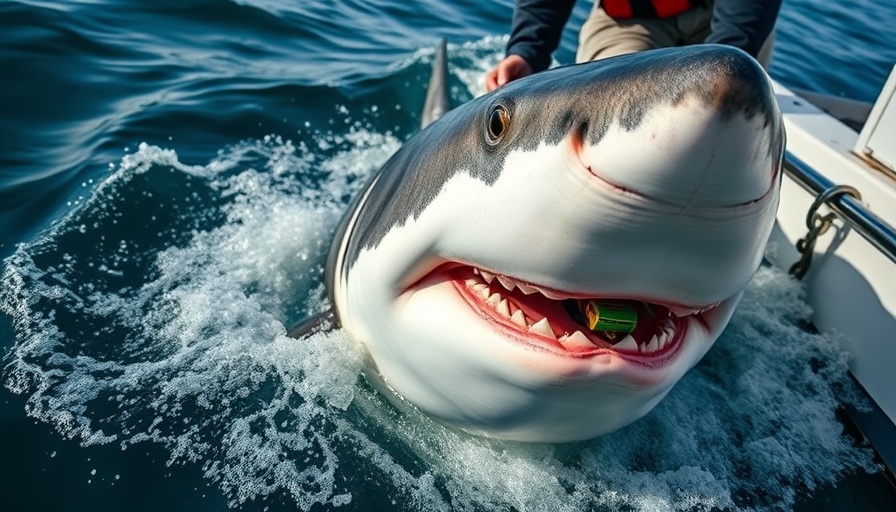
A Record-Breaking Encounter with a Great White
In recent weeks, ocean researchers have made headlines as they tracked a remarkable great white shark, affectionately named Contender, off the northern Gulf of St. Lawrence. At an impressive 4.2 meters in length and weighing over 1,600 pounds, this shark is now the largest male ever tagged in the Atlantic Ocean. Originally tagged in January off the Florida-Georgia coast, Contender has been making waves—literally—on his journey that spans nearly 1,400 kilometers from Cape Cod to eastern Canada in just over two months.
The Shark's Journey and Behavior
Chris Fischer, founder of the marine research group OCEARCH, provided insights through a recent social media update regarding the shark’s trajectory. He noted that while observing white sharks entering the Gulf of St. Lawrence during this time of year isn't unusual, very few have ventured this far into the Gulf. This exceptionally rich habitat, offering an abundance of grey and harbor seals, acts as a magnet for Contender, who was likely seeking food given that the region's waters hover around a cool 10 degrees Celsius.
Why Great White Sightings are Rare in the Eastern North Atlantic
Despite oceanic expectations, sightings of great whites in the eastern North Atlantic remain relatively uncommon. Although several confirmed appearances, including those off the Bay of Biscay near Spain and France, have been recorded, it suggests that the Mediterranean population may be expanding northward in search of forage opportunities like tuna and seals. Fischer's observations hint at a possible behavioral shift among these apex predators towards warmer waters.
The Impact on Local Boaters and Beaches
For beachgoers and boaters, the presence of a record-breaking great white adds an intriguing layer to what is often a routine interaction with nature. Local communities may feel both excitement and caution. While shark encounters can spark interest in marine life and conservation, they can also lead to increased awareness regarding safety measures in water activities. Boaters, in particular, must remain vigilant, practicing good habits to ensure both their safety and the sharks'.
Conservation Implications
Tracking a shark like Contender brings to light the importance of marine conservation efforts. OCEARCH’s innovative tagging practices contribute significantly to understanding shark migration patterns, which are essential for ensuring the survival of these magnificent creatures. As populations face challenges from overfishing and environmental changes, collaborative efforts among researchers, conservationists, and the community are necessary to protect their habitats.
What Lies Ahead for Great Whites?
The story of Contender is more than just a shark sighting; it's a glimpse into future ecological trends and the necessity for sustainable ocean practices. Understanding and protecting these apex species is critical not just for marine ecosystems, but for the balance of ocean health and, by extension, our planet. As we delve deeper into the study of these remarkable sharks, we gain nuanced insights that inform our present and future approaches to coastal conservation.
As we look forward, it will be exciting to see how researchers continue to track great white sharks to gather data that highlights their habits and role in marine ecosystems. Enthusiasts and beach lovers alike are encouraged to stay informed about this ongoing research, understanding that each revelation about shark behavior contributes to broader conservation efforts.
 Add Row
Add Row  Add
Add 




Write A Comment